Crunching up refrigerators, TVs and more: A look at Singapore’s first fully automated recycling plant for home appliances
SINGAPORE: A spent refrigerator inches up a long conveyor belt, into the mouth of a towering machine that starts up with a huge groan.
In a matter of minutes, the refrigerator that weighs almost 100kg folds and bends, gets crushed and is turned to dust. The machine then separates what comes out into foam, plastic and ferrous or non-ferrous metals.
This is Singapore's only fully automated recycling plant for large household appliances, located at Tuas View Square.
Run by EWR2, the plant processes used appliances like washing machines and dryers. The recycling facility also accepts and processes other e-waste like computers, desktops and TV screens.
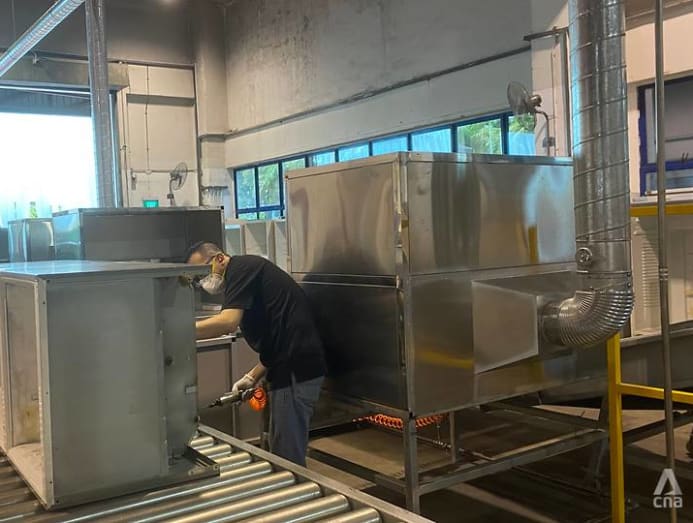
“The main components, we recover quite a lot of metals. We have copper, we have aluminium, we also have plastics,” the facility’s managing director Jonson Lai told reporters on Tuesday (Jul 13) during a visit to the EWR2 facility.
Here, about 95 per cent of the materials from large home appliances can be recovered and about 80 per cent can be recycled, he added.
READ: Nationwide e-waste management system to start in Singapore on Jul 1
There were more than 20 spent refrigerators sitting in front of the huge machine waiting for their turn with it. Plastic parts that have been stripped from their refrigerator shells sit in large bins next to them.
Before they enter the large home appliance recycling plant, another machine extracts the refrigerant from the end-of-life refrigerators. Workers also use another machine to cut open the refrigerator compressor motors to retrieve the copper coils inside.
The plant started operations in March, and has processed more than 1,000 tonnes of e-waste so far, said Mr Lai. This includes about 500 tonnes of large home appliances.
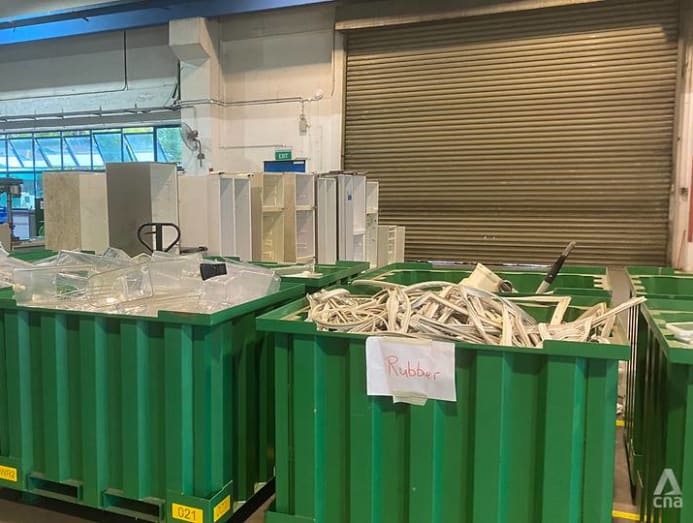
“For incoming goods, like refrigerators, when they come in, some of them are really very dirty and smelly. Some of them even have rotted food inside. So these are things we need to clean up before we can recycle them,” he added.
Singapore generates more than 60,000 tonnes of e-waste, or electrical and electronic waste, every year, and this is expected to increase, said the National Environment Agency (NEA).
READ: Singapore's e-waste collection and disposal scheme: What you need to know
The agency launched the Extended Producer Responsibility scheme for e-waste on Jul 1, making producers responsible for managing the end-of-life disposal of electrical and electronic products they supply to the Singapore market.
Regulated products include infocomm technology equipment, large appliances, light bulbs and tubes, batteries and solar photovoltaic panels.
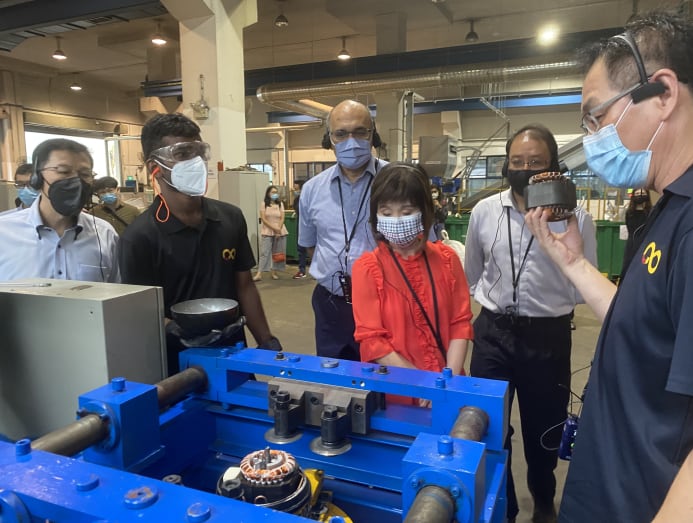
“With the recently launched Extended Producer Responsibility scheme for e-waste, regulated products that reach their end-of-life will need to be sent for proper treatment and recycling,” said Senior Minister of State for the Ministry of Sustainability and the Environment Amy Khor, who was at the visit.
“This will protect the environment and public health from hazardous substances and also ensure that the precious materials, as well as working components within the e-waste, can be recovered and reused.”
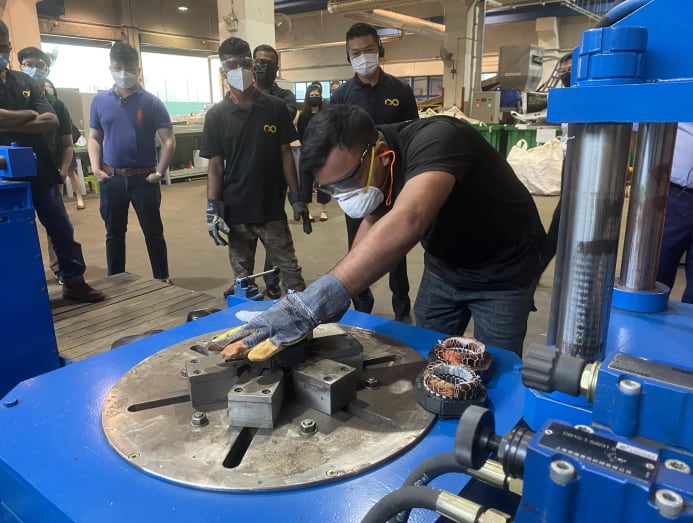
Large household appliances like air conditioning units, washing machines and refrigerators are “typically more challenging” to recycle than other types of e-waste, said Dr Khor.
“And this is because the recycling process for LHAs (large household appliances) requires highly specialised tools and machinery. And the recovered components are typically of lower value,” she added.
On top of the recycling plant for large household appliances, EWR2 also has a printed circuit board (PCB) processing plant that can take 300kg of boards at a time.
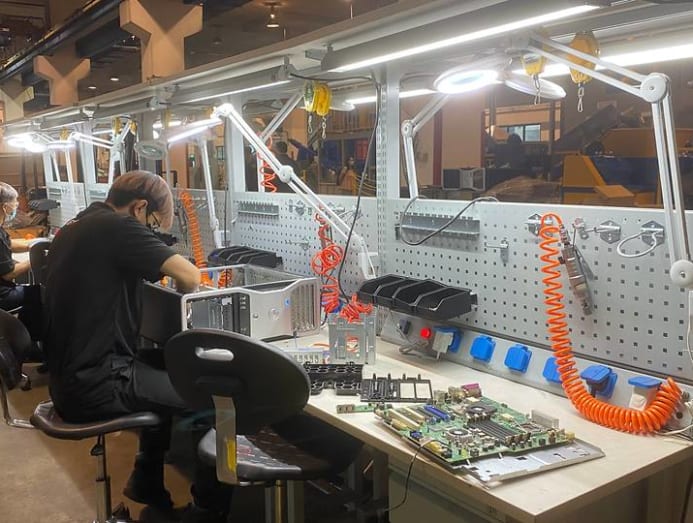
Some appliances like CPUs or computer and LED screens have to be taken apart first by hand because they contain some hazardous materials.
Most PCBs they receive first go into a component dismantling machine, which uses friction and heat to knock off or melt the separate parts attached to the board.
The parts that drop off are sent to the precious metal recovery plant on the third floor of the facility, and metals like gold, silver and palladium are extracted using acids. There are also wastewater and acid treatment plants to support the precious metal recovery plant.
What remains of the PCBs is processed in the processing plant, separated into metals and plastic.
READ: Singapore unveils Green Plan 2030, outlines green targets for next 10 years
The facility also houses a laboratory and a material testing room, which test the purity of the precious metals recycled in the plant.
A manual large household appliance recycling plant would usually need about 10 to 15 people to operate, but since EWR2’s plant is fully automated, it needs only three to four people on site to operate it, said Mr Lai.
Pre-sorting the appliances still “takes some time”, but he estimates that the fully automated plant only needs 20 to 30 per cent of the man-hours needed by a manual recycling plant.
When the volume of e-waste they receive grows, Mr Lai hopes to expand the facility’s operations.
“Presently in Singapore, not many people automate their equipment to do recycling of e-waste, and we’re doing this for household appliances because there is a need to do so, and there is volume,” said Mr Lai.
“In Singapore, there are many tonnes of refrigerators that need to be processed. With automation, we can cut short the manpower and increase the volume (that we can process).”





